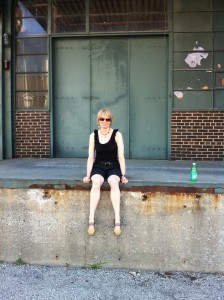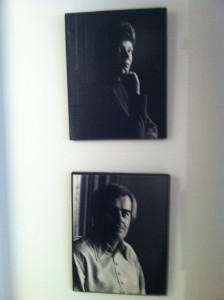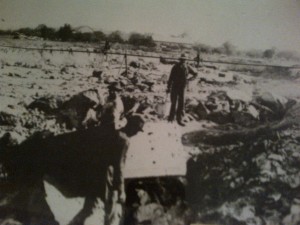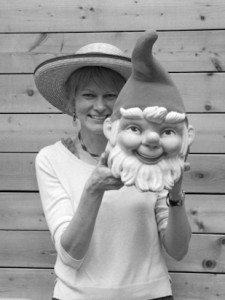 CATHERINE GRAHAM is the author of four critically acclaimed poetry collections: The Watch, and the poetry trilogy Pupa, The Red Element, and Winterkill. Her work has appeared in The Malahat Review, Descant Magazine, Poetry Ireland Review, The New Quarterly, Joyland, Literary Review of Canada, and The Fiddlehead. She holds a master’s degree in creative writing from Lancaster University (U.K.) and in addition to mentoring privately she teaches creative writing at the University of Toronto’s School of Continuing Studies and the Haliburton School of the Arts. Catherine was judge for the 2012 Aspiring Canadian Poets Contest and will mentor the winners. Her next collection will appear in fall 2013 with Wolsak & Wynn. Visit www.catherinegraham.com
CATHERINE GRAHAM is the author of four critically acclaimed poetry collections: The Watch, and the poetry trilogy Pupa, The Red Element, and Winterkill. Her work has appeared in The Malahat Review, Descant Magazine, Poetry Ireland Review, The New Quarterly, Joyland, Literary Review of Canada, and The Fiddlehead. She holds a master’s degree in creative writing from Lancaster University (U.K.) and in addition to mentoring privately she teaches creative writing at the University of Toronto’s School of Continuing Studies and the Haliburton School of the Arts. Catherine was judge for the 2012 Aspiring Canadian Poets Contest and will mentor the winners. Her next collection will appear in fall 2013 with Wolsak & Wynn. Visit www.catherinegraham.com
Seven Treasures from my life:
1.
 I love these two pictures. They hang on my study wall; two black and white photos taken in the 1970s. I remember the day they were taken. I was eight. We were living in Grimsby, and this would be our first and only formal photograph session where a professional photographer came to our house. I see who my parents are/were in these shadow-light faces. Mother: reflective, mysterious, deep and knowing, hiding her pain, living her wisdom. Father: charming with his rugged movie-star looks, his face alive even in silence, like a coiled spring ready to jump. These faces much loved and gone too early live in me now.
I love these two pictures. They hang on my study wall; two black and white photos taken in the 1970s. I remember the day they were taken. I was eight. We were living in Grimsby, and this would be our first and only formal photograph session where a professional photographer came to our house. I see who my parents are/were in these shadow-light faces. Mother: reflective, mysterious, deep and knowing, hiding her pain, living her wisdom. Father: charming with his rugged movie-star looks, his face alive even in silence, like a coiled spring ready to jump. These faces much loved and gone too early live in me now.
2.
A box holding six dolls — three males, three females. Tiny, wiry, burlap-dressed dolls, all the way from Guatemala. They were a gift from my aunt, my father’s sister. She called them worry dolls. “Keep them on your bedside table and if you have worries before you go to sleep, take them out and tell the dolls your worries; let them do the worrying for you.”
She knew I was a worrier. She could see it on my face. But I was sensitive too. I thought about those dolls — would they really want to take on all my worries? Years later I wrote this poem:
Worry Dolls
A souvenir from Guatemala,
an aunt’s gift for a little girl.
Six wiry dolls in spicy clothes
tucked inside a bamboo box.
“Take one out for every worry.
Let them worry while you sleep.”
In her dreams the dolls grow angry—
we have worries for you to keep.
(from Pupa, Insomniac Press)
3.
 This black and white photo was taken in 1898 during the eight-year operation of Windmill Point Quarry. The limestone quarry supplied stone for the Buffalo breakwater before filling with water from an underground spring.
This black and white photo was taken in 1898 during the eight-year operation of Windmill Point Quarry. The limestone quarry supplied stone for the Buffalo breakwater before filling with water from an underground spring.
Decades later we lived in a bungalow beside that quarry. We moved there after my mother was diagnosed with cancer. She was told she would die in a year. She lasted seven, thanks to her determination and the healing powers of the tree-rimmed, water-filled quarry. Long gone from my life, this place lives on in my poems.
4.
During the earlier stages of our relationship I asked my partner half-teasingly to write me a poem for my birthday. To my surprise when I opened up my birthday card, out fell a sheet of paper and on it was a poem. The words blew me away. It wasn’t just for me; it was a tribute to all women. “This should be published,” I said. My partner laughed, unaware of the poem’s power and beauty.
A month or so later, with my encouragement, he submitted it for an anthology. “It won’t get accepted,” he said. It did.
5.
Sometimes our treasures aren’t tangible things. One of my treasures lives inside a lost email.
A few years ago my partner, knowing of my long-term admiration for P.K. Page, secretly arranged for me to meet the celebrated poet during a visit to the West Coast. So off we went in our rental car, ferrying across the waters to Vancouver Island, and then driving through the November dark to the home of P.K. Page. Her grandson Arthur was our link to the meeting so we had known what gift to bring, a bottle of her favourite vodka, Grey Goose. How warmly she greeted us when we came to her door.
The tremendous visit went by much too fast and we became so lost in conversation that when the time came to depart we had to go quickly to catch the last ferry to the mainland. Before leaving I shyly gave her a copy of my book Pupa. She looked at the book and then looked at me. “I might not like it,” she said. “That’s okay,” I said, hiding my nervousness.
The following week I received an email from P.K. expressing her admiration for the succinctness of the poems and other praiseworthy comments. I was thrilled. Not long after, my computer crashed and I lost that email. I can’t remember her exact words, but I cherish the memory.
6.
Another treasure is an abstract painting by a dear friend, internationally renowned artist Uno Hoffman. Acrylic on canvas, 2’ x 2’, it hangs in the centre of our living room, the heart of our home. With its vibrant moods and pulsing colours, red, orange, yellow, and blue beneath a running cadence of white loopy scratches and scrawls of cryptic black, the painting brings my eye in every time I pass. The energy it emits goes beneath the skin straight to my heart, the perfect circle. For I’m there too — the piece was inspired by a poem of mine, the title becoming the painting’s title: “The Moon Beneath.”
7.

Photo credit: Patrik Jandak
I picked him up on a whim years ago (he was sitting beside a garbage can on the side of the road) on my drive to work. I was a Grade 3 teacher at that time and the once-abandoned gnome became “Gnome,” my classroom mascot. Later when I left grade school teaching, Gnome followed me to Northern Ireland where I lived for several years before returning to Canada.
I was finally ready to discard him one day, when my partner said, “You can’t throw Gnome out!” So Gnome remains in our backyard, forever smiling.
This is beautiful, Catherine. I especially related to the child who worried about her worry dolls.
Thanks, Kristen. I enjoyed reading your treasures too!
Catherine, I have a gnome in my backyard too (now safe inside the shed for the coming winter). I trust people who take care of gnomes!
Cool, Morgan! Even gnomes need to hibernate.